Genocide
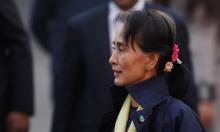
U.N. human rights officials have said Myanmar’s security forces may be guilty of genocide against the Rohingya Muslim minority. Since August, more than 600,000 Rohingya have fled to neighbouring Bangladesh since Myanmar began systematically targeting Rohingya armed groups.

The Reuters report drew on interviews with Buddhists who confessed to torching Rohingya homes, burying bodies, and killing Muslims in what they said was a frenzy of violence triggered when Rohingya insurgents attacked security posts last August.
The account marked the first time soldiers and paramilitary police have been implicated by testimony from security personnel in arson and killings in the north of Rakhine state that the United Nations has said may amount to genocide.

There are two actions the president should take now to stop bureaucrats from obstructing assistance to genocide survivors whose very existence as a people teeters on a precipice.
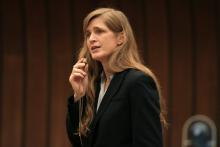
Withstanding some unforeseen breakthrough, Power will not succeed in persuading Russia, Iran, and the Assad regime in Syria. Her plea is passionate, but likely not a winning argument. The best arguments don’t always win. But I believe I know why she still fights so hard, and it’s a lesson for all of us who care.

Francis’ trip to the site carries huge significance, following the pontiff’s description of the killings as “the first genocide of the 20th century.”

As I watched the presiding Judge O-Gon Kwon read the verdict — for a full 58 minutes — it all came back to me. In 1996 and in 1999, I traveled in and out of the war zones in Bosnia. The hand-dug graves in the soccer field. The reports of Muslim massacres; of whole villages forced into a school gym and burned alive; the small hotel where we stayed that was also housing skeletal refugees recently released from a Serb concentration camp; the dogs with blown-off paws; the underground bakery distributing bread at the risk of their lives. And most of all “Sniper Alley” in downtown Sarajevo and the Serb soldier who showed me his sniper nest on Serb-held Mt. Jajolina and pointed his rifle at the place where I was staying.
1. How Kasich’s Religion Is Hurting Him with Conservatives
“The governor’s faith appears to drive his politically moderate stances on immigration, climate change and gay marriage—positions that alienate him from mainstream conservatives whose support Kasich needs to have a chance at the nomination.”
2. Hacker Group Anonymous Declares War on the Trump Campaign
Be on the lookout for said “total war” on April 1.
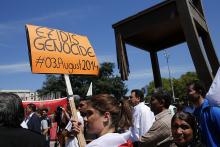
Former Soviet dissident Natan Sharansky famously said that President Ronald Reagan’s 1983 “Evil Empire” speech was a turning point for him and other prisoners in the Soviet gulag.
“For us, that was the moment that really marked the end for them, and the beginning for us,” recalled Sharansky in a 2004 interview.
He and fellow prisoners communicated the news between cells with taps on walls and toilets. They understood immediately that the truth about the Soviet Union would resound around the world: Reagan’s moral condemnation made indifference toward Soviet oppression unthinkable.
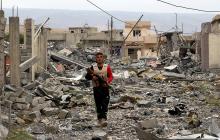
The Knights of Columbus has issued a 280-page report declaring that the Islamic State group is committing “genocide” against Christians and other religious groups in the Middle East and urging the U.S. State Department to use that term to describe its actions. Knights of Columbus CEO Carl Anderson said his Catholic fraternal organization, working in partnership with the group In Defense of Christians, does not contend Christians alone are facing genocide from the group known as ISIS but it believes the State Department must include them.
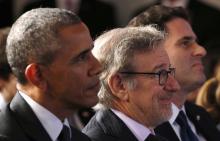
President Obama warned of growing anti-Semitism in the United States and the world as he honored two Americans and two Poles who helped save Jewish lives during World War II.
“Here, tonight, we must confront the reality that around the world, anti-Semitism is on the rise. We cannot deny it,” Obama said at a Holocaust remembrance ceremony at the Israeli embassy Jan. 27. He cited Jews fleeing European cities; attacks on Jewish centers in Mumbai, India and Overland Park, Kan.; and swastikas on college campuses.

Jan. 27 is International Holocaust Remembrance Day, the date the United Nations has chosen to commemorate victims of the Holocaust during World War II. Six million Jews were murdered by Germany’s Nazi regime, along with 5 million non-Jews who were killed. The anniversary, marked each year since 2005, falls on the anniversary of the liberation of the Auschwitz-Birkenau death camp in Poland by the Russian army in 1945. One million people died there.

I spoke with James Tufenkian, founder of Tufenkian Foundation which serves to promote social, economic, cultural and environment justice in Armenia as it recovers from its genocide. I asked him about his connection with Sojourners, and how his work and faith intersect.
Ariana Denardo (AD): How did you get connected with Sojourners, and why did you decide to become a donor?
James Tufenkian (JT): My brother, a retired pastor, and I were having a series of conversations about the involvement of the church in social issues. He mentioned Sojourners, so I visited the website, read the magazine, and got interested. I found Sojourners to be the best, maybe the only organization I know of that works on social justice as Christians living out Christ’s example. It was natural for me to want to support that in different ways, one of them being as a donor.
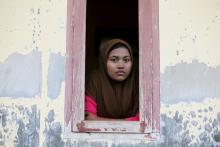
Hundreds of thousands of Rohingya Muslims live in squalor in Myanmar’s western Rakhine State. That number has been falling fast as thousands flee by land and sea in search of better lives and basic survival. Here’s a look at who the Rohingyas are and why they’re leaving Myanmar in droves.
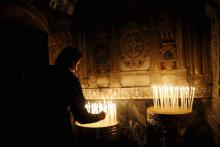
One hundred years ago — April 1915 — as World War I raged across Europe, the government of the Ottoman Empire attacked its Armenian citizens. Over the next several years, it is estimated that as many as 1.5 million Armenians died. Able-bodied men were murdered or enslaved as forced labor in the army, and hundreds of thousands of women, children, the infirm, and the elderly were marched into the Syrian desert to face death.
Supported by the Young Turks, an ultranationalist party that approved systematic deportation, abduction, torture, massacre, and the expropriation of Armenian wealth, the German-allied Ottoman government used the excuse of war to initiate the forcible removal of Armenians from Armenia and Anatolia where they had lived for centuries.
The targeting and mass murder of Armenians has been termed a genocide.
Although racial, ethnic, and religious wars have killed millions over the centuries, genocide is a unique byproduct of the 20th century. It requires both a rabid nationalism and the capacity of a central authority to organize and implement a sustained and systematic program of targeted mass destruction. Not until the 20th century had governments the necessary technologies, resources, and means to ally their historical ethnic, religious, or racist hatreds with radical nationalism to end the collective existence of a people.
The Armenian genocide was recognized and deplored around the world, even as modern Turkey resists the “genocide” label. American diplomats, Russians, Arabs, and German officers stationed in Ottoman lands witnessed the slaughter and alerted the wider world. In May 1915, Great Britain, France, and Russia vowed to hold the Turks personally responsible for their crimes. Relief efforts to save the “starving Armenians” were widespread.
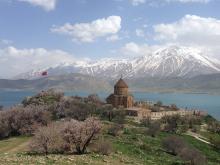
This tiny Kurdish village outside the city of Van in Turkey’s southeast is home to the ruins of a once-famous 11th-century Armenian Christian monastery.
Known to Armenians as Varagavank, it thrived as a place of worship until Turkish forces looted it and murdered parishioners in the mass killing sprees of 1915.
Today, the roof is collapsing. Toppled stone columns lie nearby. And with no signage, there is no acknowledgment it was once a celebrated church for Armenians.
Varagavank is one of hundreds of disappearing physical reminders of a community whose history in present-day Turkey goes back more than 2,000 years. Over the past century, the Turkish government — in writing its own narrative of what Armenians call genocide — has destroyed many Armenian churches, homes, schools, and cemeteries, or allowed them to fall into ruins. They are sites other countries might consider valuable antiquities.
“The term we use for this is ‘cultural genocide,’” said Vahram Ter-Matevosyan, a historian at the American University of Armenia in Yerevan, Armenia’s capital.
“We consider what is happening to many churches a continuation of the genocide which started at the beginning of the 20th century. It is painful, utterly painful.”
Historians and visitors have noted holes in the ground of Armenian historical sites throughout Turkey, evidence of widespread rumors that Armenians buried their riches before fleeing.
Hermine Sayan, an Armenian who lives in Istanbul, said her heart was broken when she visited what remained of a destroyed church in Malatya, a city in eastern Turkey, a few years ago.
“We stood together saying our prayers, and we were crying,” said Sayan, whose grandparents survived the genocide.
On April 24, Armenians worldwide will commemorate 100 years since almost 1.5 million of their ancestors died in the last days of the Ottoman Empire, in massacres, by starvation or during forced death marches into the Syrian desert.

I felt the ground crumbling from beneath me and so I clung to silence. Still, the sound of death was there. I tried to drown out the haunting screams echoing in my brain with my breath — but the rising and falling of my chest exhausted my efforts. In remembering those suffocated by inhumanity, I felt guilty for breathing in the sweet scent of life. Here, memories of death are inescapable in a country that holds so much beauty.
We stayed in silence together as we drove home — attempting to escape the bloody reminders of death. Home is at the Pallottine mission guesthouse built on the same campus that the Gikondo Massacre took place 20 years ago. On April 10, 1994, three days after the genocide began, the interahamwe savagely murdered 110 Tutsis in a large parish on this campus. As if simply killing wasn’t enough, the militia slowly tortured and mutilated the bodies of all Tutsis present at the church. Somehow, 11 children survived the slaughter and were hidden in another chapel by the parish nuns — I could see this chapel from the balcony of my guest room. But three days later, the interahamwe returned to Gikondo to set the chapel on fire. There were no survivors. This is the place we call “home.” The UNAMIR considered this massacre at Gikondo the first evidence of “genocide,” referring to violent crimes intending to wipe out the existence of a people group. In response to these evident systematic killings, the commander of the U.N. Peacekeepers pleaded with his superiors to allow him to intervene before more died. He said that he only needed 2,500 troops to end the slaughter within weeks to defend the Tutsis. His plan of attack against the interahamwe would stop their violent rampage. Shockingly, the U.N. denied his request and instead, required 90 percent of peacekeeping forces to withdraw from Rwanda. A month later in May, the U.N. Security Council finally voted to send 5,500 peacekeeping troops to Rwanda however, the United States stalled their deployment. Delighted by the world’s lack of response, the interahamwe continued to reign and the bloodbath escalated. One hundred days passed and still, the world did not say a word.
Joshua broke the silence,
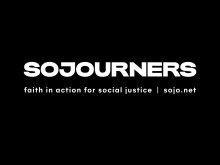
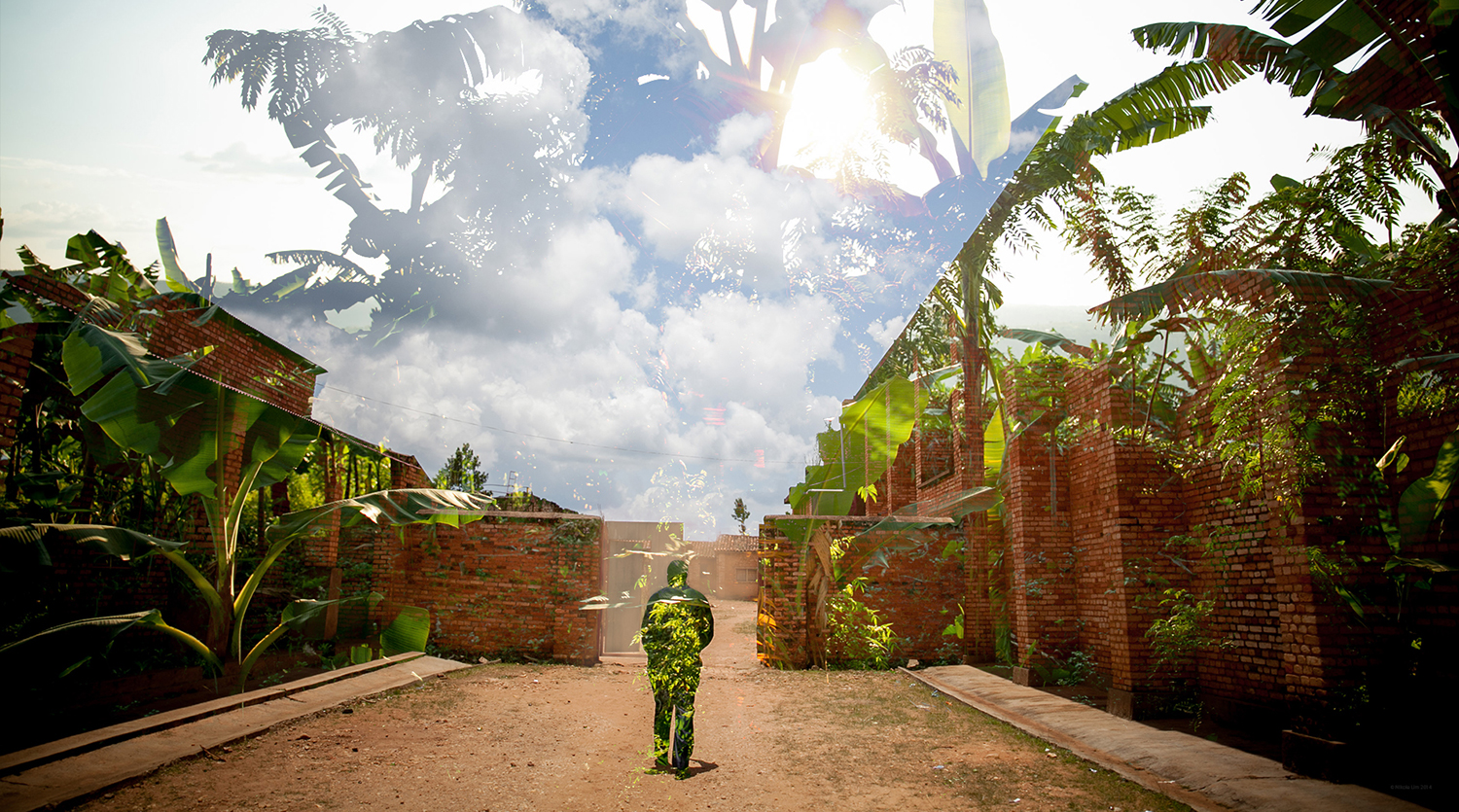
Conversations in the car are intense. Colonization, spirituality, politics and utter brutality, violence and betrayal — all incomprehensible factors that led up to genocide. Our conversations are set to the backdrop of thousands of lush hills and thousands of massive graves concealing bones — bones of innocent men, women, and children whose only crime was being born Tutsi. The coexistence of Rwanda’s brutal history and scenic beauty is surreal.
No matter how many questions I ask, how many stories I listen to, how many fragments of bones I see, I don’t think I’ll ever be able to understand how in just one hundred days, close to one million people were slaughtered as if they had no worth. Identifying with these stories of gross atrocity seems impossible.
“I don’t really call myself a survivor because when the one hundred days of genocide began, I was in Uganda. Even though I came back to Rwanda in the middle of the killings, I was never in an area controlled by the militia. Yes, it was risky to return to Rwanda at that time and I remember two occasions where I got very close to being killed—but my story isn’t as significant as others we will be seeing. For example, my wife’s—she survived, but barely. She doesn’t talk about it.”
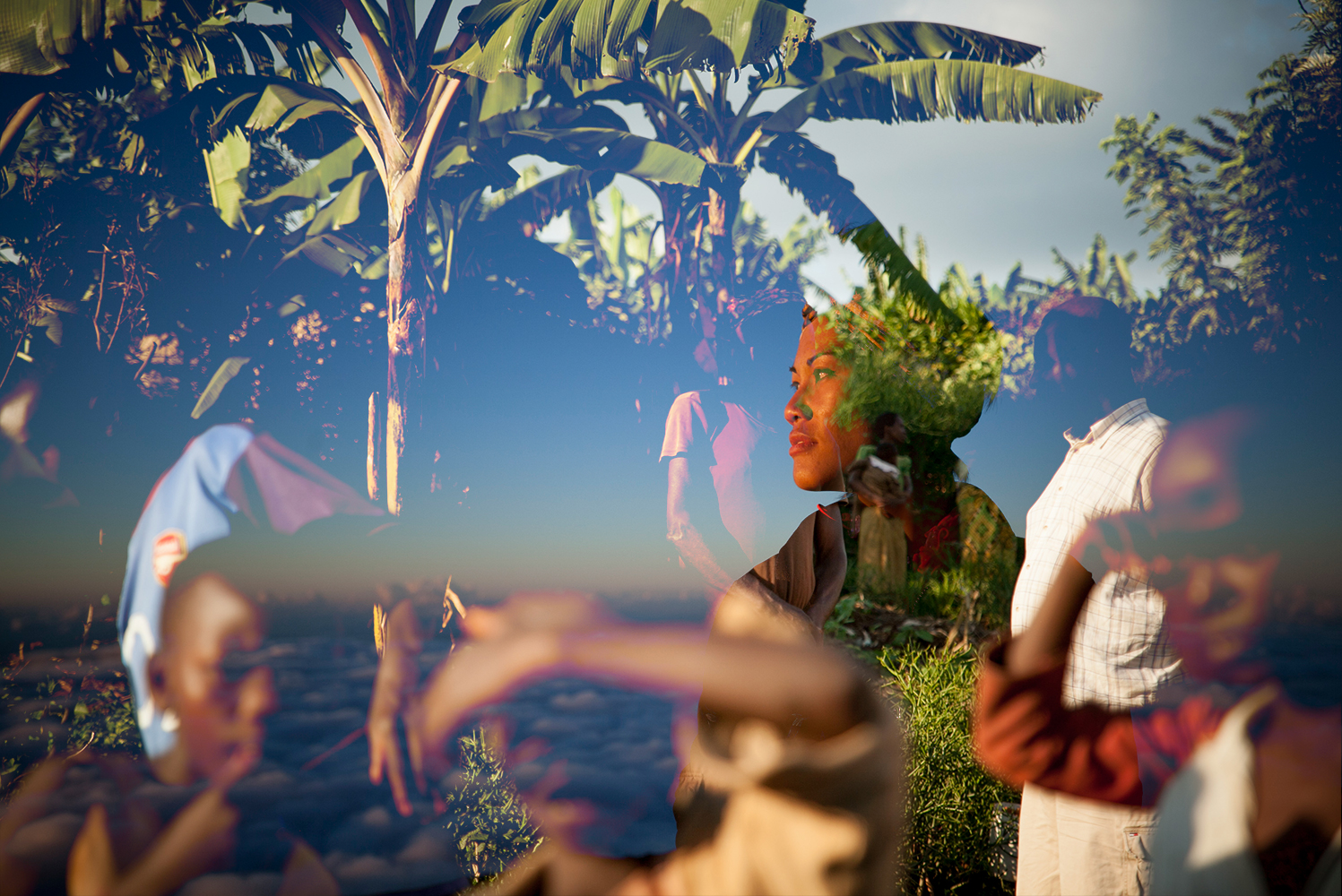
I was a reluctant artist, self-doubting leader and a broken soul.
I was in search of healing.
After a series of traumatic experiences that culminated with my hospitalization in Zambia, I went on a sabbatical in search of courage, tenacity, and renewal to continue in my vocation. It was early 2014, and we were entering into the year commemorating 20 years since the genocide in Rwanda. During this time, my mentors were leading a pilgrimage to Uganda and Rwanda to journey through places of immense pain and tremendous hope as a means to engage in the pain and hope in one’s active life. Because of my closely related work in Africa, I didn’t want to go — I knew I would have to intentionally delve into the hellish reality of a violent massacre I knew very little of. Simultaneously, I knew that by stepping into the pain, I would find the hope I was so desperately searching for. And so, together with eight other pilgrims, I went. We journeyed alongside of survivors and perpetrators of genocide as an attempt to identify in the incomprehensible pain that oppresses us all. It was through this experience that healing came in a profound way.
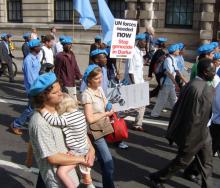
Americans were introduced to Sudan and what is now South Sudan by immigrants, asylum seekers, and refugees like the Lost Boys and Girls of Sudan, who sought protection from a brutal dictatorship in Khartoum. Sudanese turned to the U.S. for a better life not only for themselves but in order to support their family and friends back home, and to advocate for help in stopping genocide, mass atrocities, and human rights abuses committed by an oppressive regime. Many Sudanese captured our hearts not only because of their fight for freedom and their bravery in enduring terrible suffering, but because of their resolve to access the educational and employment opportunities available in the U.S. to prepare themselves to return and help rebuild a country destroyed by decades of state-sponsored violence.